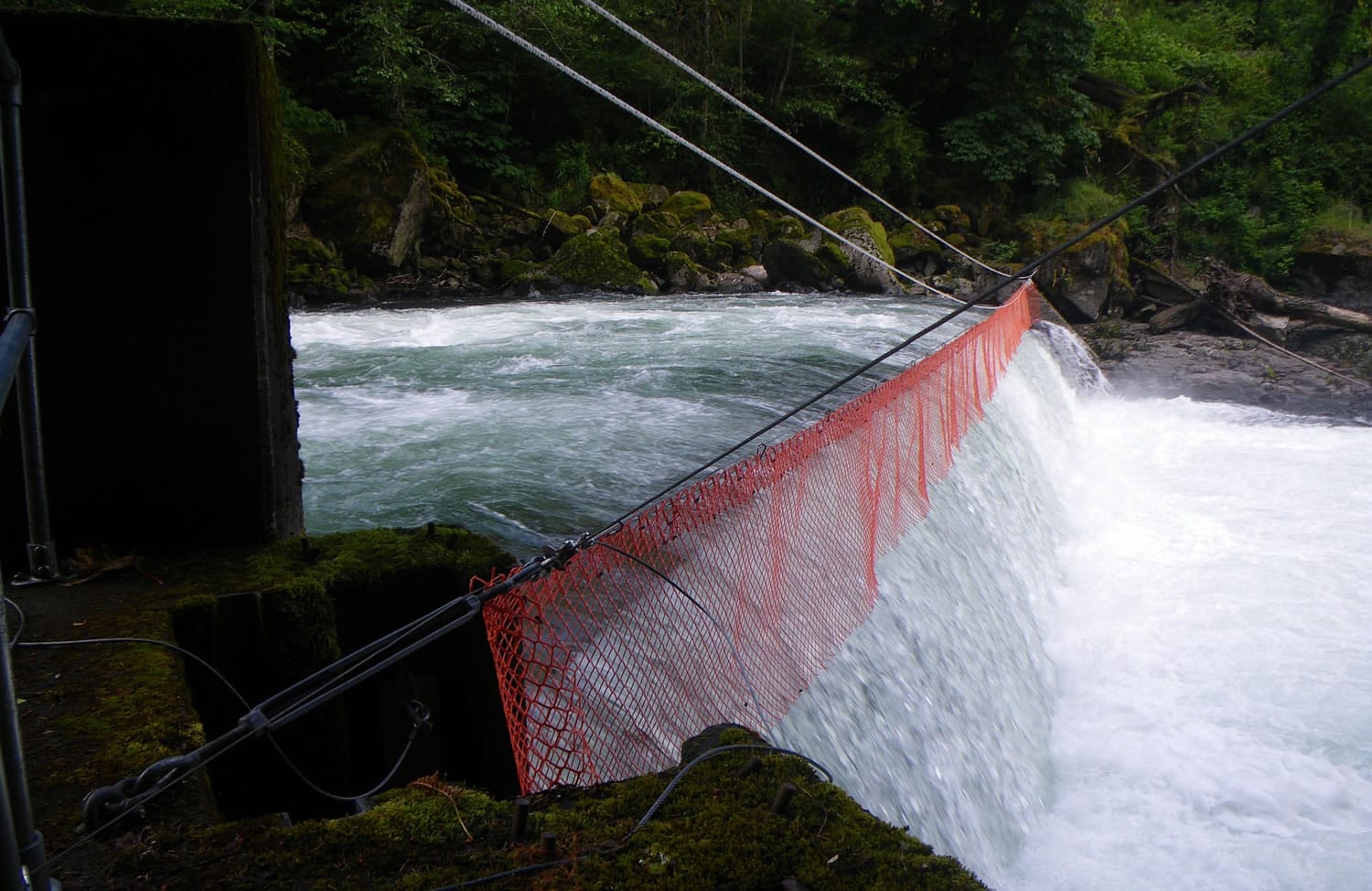State officials have received at least partial funding to fix the fish barrier at Kalama Falls Hatchery, a prerequisite to resuming the recycling of hatchery summer steelhead in the popular Cowlitz County stream.
Eric Kinne, hatchery reform coordinator for the Washington Department of Fish and Wildlife in Southwest Washington, said his agency has gotten money from the federal Pacific Coast Salmon Recovery Fund to renovate the barrier, which has proven ineffective at stopping hatchery steelhead from reaching spawning grounds used by wild fish.
He asked for $500,000, but is not sure if WDFW got the full amount.
For years, the agency has taken hatchery-origin summer steelhead that return to Kalama Falls Hatchery and trucked them to the lower river for release, giving sportsmen another chance. About 20 percent of the recycled fish are caught by anglers, based on a two-year study conducted on the Cowlitz River.
This year, however, recycling has stopped.
Wild steelhead in the Kalama River are listed as threatened under the federal Endangered Species Act.
Federal and state recovery plans for wild steelhead place limits on the number of hatchery-origin steelhead that can be on the spawning grounds. When hatchery and wild steelhead interbreed, the survival of their progeny is low.
The barrier at Kalama Falls Hatchery to stop steelhead from moving into the upper river is essentially construction netting hanging from a cable atop a small waterfall at the base of the fish ladder.
It is referred to by state officials as “the curtain of denial.”
Jamie Lamperth, a department biologist, said summer steelhead are able to swim under the netting and up the falls, thus getting in the upper Kalama.
In 2014, snorkel surveys showed an estimated 750 wild summer steelhead upstream of Kalama Falls Hatchery and 1,700 hatchery fish, Lamperth said. Of those 1,700 hatchery steelhead, 350 were placed upstream intentionally.
Those ratios are far from the goal to limit wild-hatchery fish interbreeding.
To lessen the number of hatchery steelhead upstream of Kalama Falls Hatchery, the department already has:
o Increased the daily bag limit to three hatchery steelhead a day.
o Suspended the practice of transporting hatchery steelhead upstream of Kalama Falls.
o Suspended the practice of recycling hatchery summer steelhead from Kalama Falls Hatchery back downstream.
The end of the the recycling program is causing plenty of angst among Kalama River anglers. About 30 of them vociferously told the department so at a public meeting in late June.
Sam Gibbons, manager of Kalama Falls Hatchery, said the department has looked at a potential electric barrier at the site.
The department is getting $4 million in the state’s 2015-17 capital budget, the final piece needed in a $10.4 million renovation of Kalama Falls Hatchery.
Currently, fish entering the Kalama Falls Hatchery fish ladder have to be moved by truck about 200 yards to a sorting pond. That’s hard on the fish and inefficient.
The $10.4 million project will extend the fish ladder, rebuild the adult and juvenile ponds and rebuild the sorting facility.
“It’s a full rebuild of the adult handling facilities,” Kinne said.
It is possible some money from that rebuilding may be available to contribute toward fixing the barrier, he added.
Despite the unhappiness over not recycling the hatchery steelhead downstream, there are no plans in the near future to resume the practice, said Cindy LeFleur, regional fish program manager for the Department of Fish and Wildlife.
“Our No. 1 goal has to be wild fish,” LeFleur said. “We don’t want to give them (hatchery fish) a second chance to jump the falls. But there’s no reason not to recycle once the barrier is fixed. We want those hatchery fish caught.”




